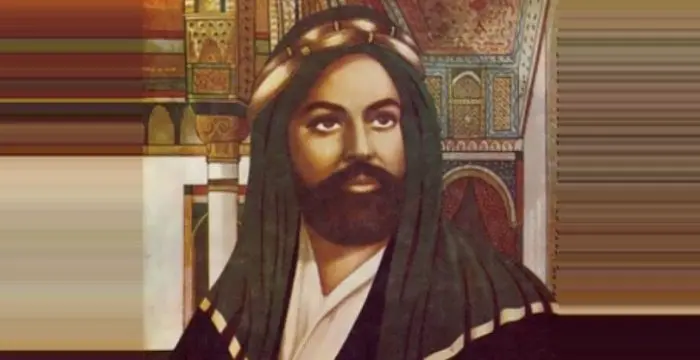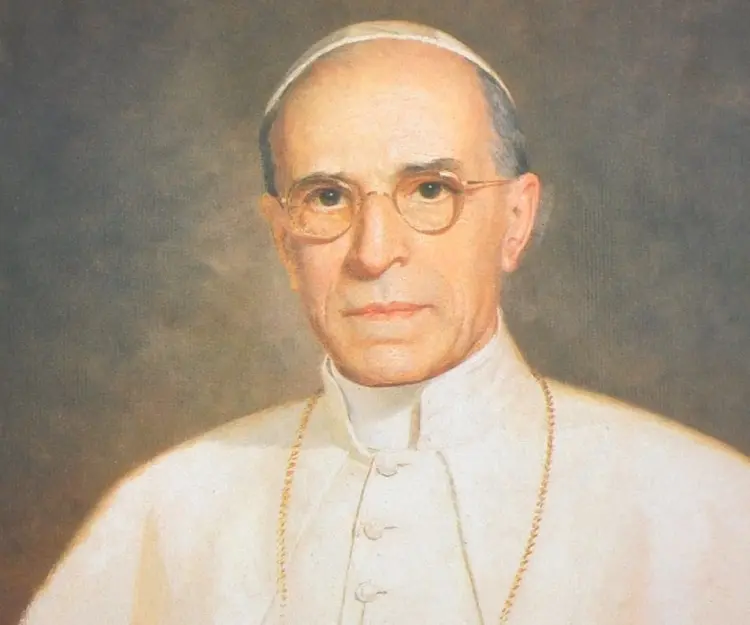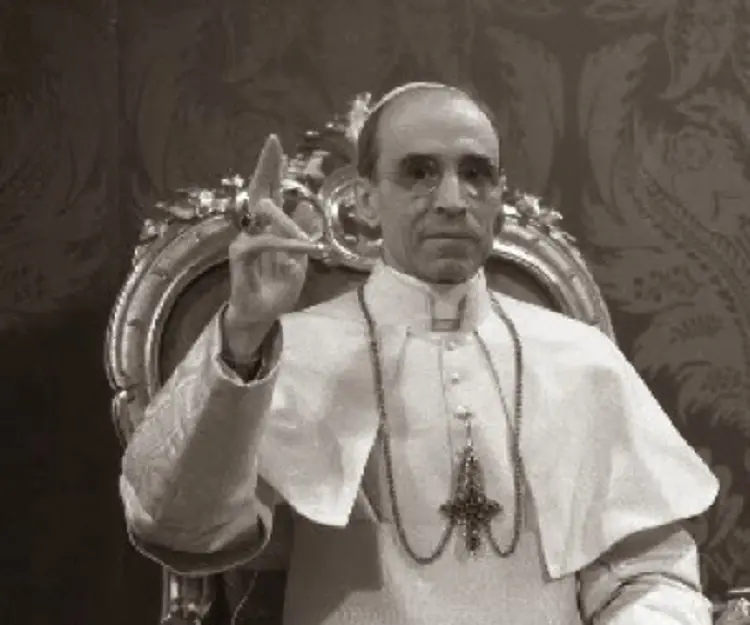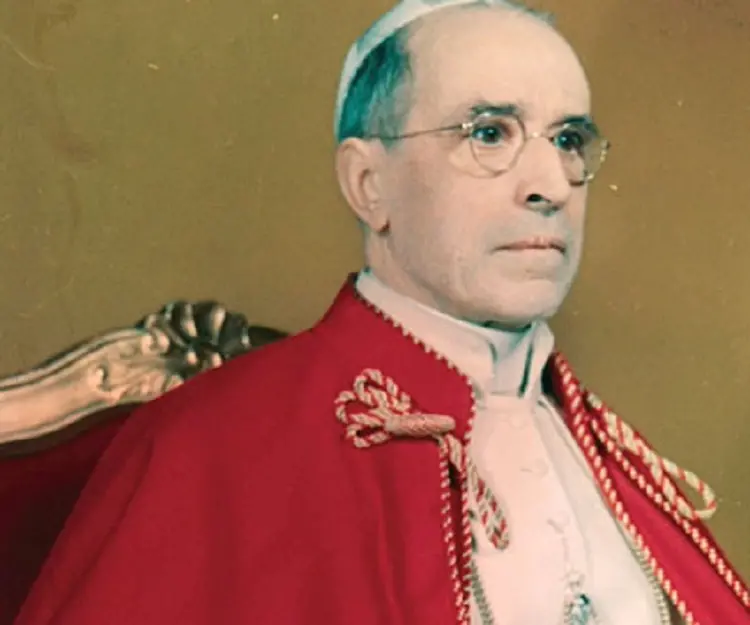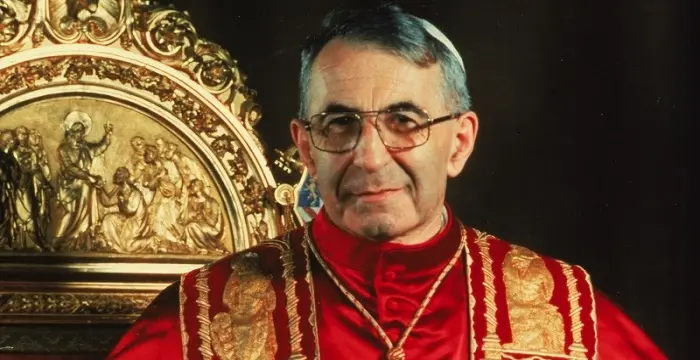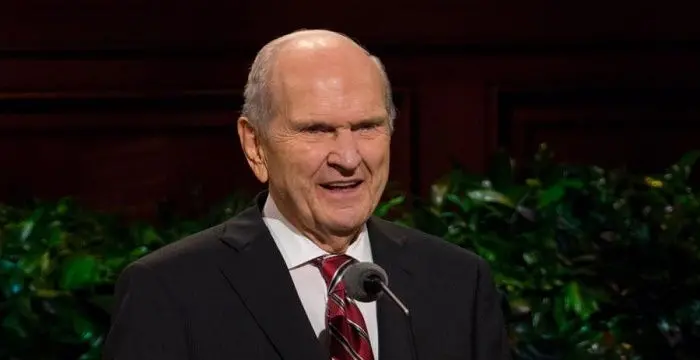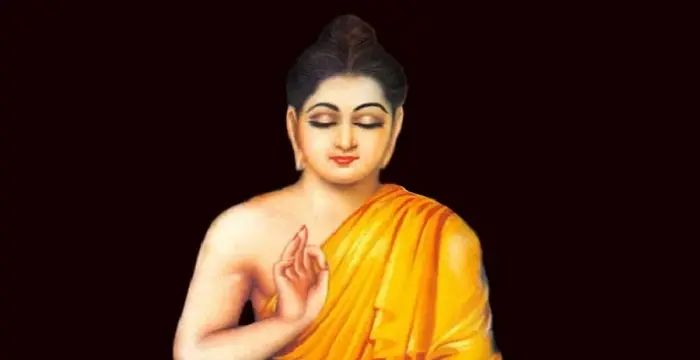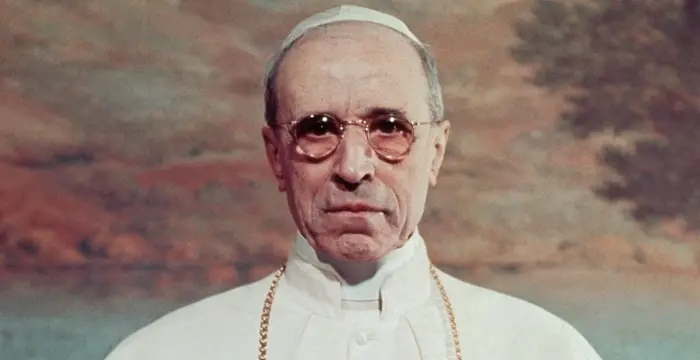
Pope Pius XII - Pope of Roman Catholic Church, Facts and Childhood
Pope Pius XII's Personal Details
Pope Pius XII was the Pope during the turbulent times of World War II
| Information | Detail |
|---|---|
| Birthday | March 2, 1876 |
| Died on | October 9, 1958 |
| Nationality | Italian |
| Famous | Leaders, Spiritual & Religious Leaders, Pope of Roman Catholic Church, Religious Leaders, Spiritual |
| Spouses | no value |
| Siblings | Elisabetta Pacelli, Francesco Pacelli, Giuseppina Pacelli |
| Known as | Eugenio Maria Giuseppe Giovanni Pacelli |
| Universities |
|
| Founder / Co-Founder |
|
| Birth Place | Rome |
| Religion | Roman Catholic Church |
| Gender | Male |
| Father | Filippo Pacelli |
| Mother | Virginia Graziosi |
| Sun Sign | Pisces |
| Born in | Rome |
| Famous as | Pope of Roman Catholic Church |
| Died at Age | 82 |
// Famous Religious Leaders
Prophet Muhammad
Prophet Muhammad was the founder of Islam, one of the most widespread religions in the world. This biography profiles his childhood, life story, achievements and more.
Murad IV
Murad IV was one of the mighty Sultans in the history of the Ottoman Empire. This biography profiles his childhood, family, accession, rule, administration and timeline.
Eckhart Tolle
Eckhart Tolle is a well-known spiritual leader, and author. Check out this biography to know about his childhood, family, personal life, spiritual awakening, etc.
Pope Pius XII's photo
Who is Pope Pius XII?
The Venerable Pope Pius XII was one of the recognized leaders of the Roman Catholic Church who took charge at a time when the world was embroiled in a long, tumultuous and conflicting phase of World War II. His reign, which is the most controversial one in regards to the modern times, was marked by dealing with the ravages of World War II, facing the abuses of the Nazi, Soviet and Facist regime, confronting the challenges of post war period and above all, rising above them and balancing the spiritual and religious dogmas in tough times. Though criticized for his ‘public silence’, his ‘neutrality’ and his ‘inaction for the fate of Jews’, Pope Pius XII who had been a diplomat all through his life before becoming a pontiff, used the same to aid the victims of the war. In his diplomatic ways, he lobbied for peace and spoke out against the ill-fated death of innocents but not so strongly so as to offend the Nazi and further ignite the combat. Post war, he strongly advocated peace and reconciliation. Pope Pius XII was also an ardent opponent of Communism and came up with a doctrine that in effect could excommunicate Catholics who professed communism.
// Famous Pope of Roman Catholic Church
Pope John Paul I
Pope John Paul I was the Pope from 26 August 1978 to 28 September 1978. Check out this biography to know about his childhood, family life, achievements and fun facts about his life.
Childhood & Early Life
Pope Pius XII was born as Eugenio Maria Giuseppe Giovanni Pacelli on March 2, 1876 in Rome to Filippo Pacelli and Virginia (née Graziosi) Pacelli. He had three siblings, a brother and two sisters. Pacelli’s family was ardently religious with a history of ties to papacy.
In 1880, the family moved to Via Vetrina. Pacelli studied at the Convent of the French Sisters of Divine Providence in Piazza Fiammetta, before switching to a private school in 1886. In 1891, he enrolled at Liceo Ennio Quirino Visconti Institute for better education.
In 1894, he began to study theology at Almo Collegio Capranica. Later, he enrolled at three universities, Jesuit Pontifical Gregorian University for a philosophy course, Pontifical Roman Athenaeum S. Apollinare to study theology and State University, La Sapienza to study modern languages and history. However, by year end, he dropped out of Capranica and the Gregorian University. Finally in 1899, Pacelli received his doctorate degree in Sacred Theology.
Career
Immediately after completing his doctorate degree, Pacelli was ordained as a priest on Easter Sunday on April 2, 1899. Following this, he began postgraduate studies in canon law at Sant'Apollinaire. His first ever assignment was as a curate at Chiesa Nuova.
In 1901, he took up a position at the Congregation for Extraordinary Ecclesiastical Affairs, a sub-office of the Vatican Secretariat of State. He also worked as an apprentice in Gasparri's Department of External Affairs.
Rising up the ranks, Pacellli became a papal chamberlain and soon in 1905 received the title of domestic prelate. From 1904 to 1916, he assisted Cardinal Pietro Gasparri in his codification of canon law with the Department of Extraordinary Ecclesiastical Affairs, serving as the Secretary in the last two years.
After the death of Pius X on August 1914, Benedict XV became his successor. Under Pope Benedict XV, Gasparri was named Secretary of State. Gasparri gave Pacelli the position of Undersecretary of State.
In April 1917, Pope Benedict XV appointed Pacelli as nuncio to Bavaria. The following month, he was consecrated as titular Archbishop of Sardis in the Sistine Chapel in May 1917. His tour of the German Empire was a successful one. People responded positively to the Papal initiative. He carried out Pope Benedict’s humanitarian works by helping out the Prisoners of War and healing them from the postwar distress.
In June 1920, Pacelli was appointed Apostolic Nuncio to Germany. He moved base to Berlin in 1925. In Berlin, Pacelli served as Dean of the Diplomatic Corps and remained active in diplomatic and many social activities. In the post-World War I period, he worked to strengthen diplomatic arrangements between the Vatican and the Soviet Union.
In December 1929, Pacelli was made a Cardinal-Priest of Santi Giovanni. Three months later, in February 1930, Pope Pius XI appointed him Cardinal Secretary of State. He was responsible for foreign policy and state relations throughout the world.
During his tenure as the Cardinal Secretary of State, Pacelli signed concordats with a number of countries. The concordats allowed the Catholic Church to organize youth groups, make ecclesiastical appointments, run schools, hospitals, and charities, and even conduct religious services. He also resumed ties with the United States, thus re-establishing a diplomatic relation that had been broken.
Following the death of Pope Pius XI in February 1939, a conclave was called upon. Though there were several names that were suggested, the contest was between choosing a diplomatic or a spiritual candidate. It was Pacelli’s experience in Germany that tilted scales in his favour.
He became the first cardinal Secretary of State to be elected pope since Clement IX in 1667. Immediately after his election, he chose the regnal name Pius XII in honour of his immediate predecessor.
The coronation service for Pope Pius XII took place on March 12, 1939. It was under his pontificate that the Italian monopoly on Roman Curia ended with German, French, Americans, Asians and Dutch Jesuits finding a prominent place. He appointed increasing number of Cardinals from other countries, thus lessening the Italian dominance and influence of fifty years.
Pope Pius XII tenure in papacy was a complex one. Right at the beginning, he had to deal with the ravages of World War II. Since he was trained as a diplomat, Pope Pius treaded on a cautious route all through. He hoped to serve as a ‘Pope of Peace’. His attempt at dissuading the European governments from embarking on war was unsuccessful. Thus, unable to stop the war, he instead used radio to broadcast peaceful messages and the evils of modern warfare.
Pius was charged of policies that were tinged with uncompromising anticommunism. Despite his personal hatred of communism, he refused to support the Nazi invasion of the Soviet Union. He employed diplomacy while collaborating with the Nazis. He feared that if he condemned Nazi’s openly, it would lead to further violence.
Towards the end of World War II, Pope Pius became extremely vocal against the unconditional surrender demanded by the Allies. He feared that such a demand would prolong the war and also bring communist ideology to the Eastern European countries. To counter it, he issued a decree attacking the Soviet Union’s totalitarianism and authorized the Holy Office to excommunicate Catholics who collaborated with the communists.
Though the Vatican was strictly impartial and neutral during World War II, they however, under Pope Pius XII took up a number of initiatives to aid the victims under Hitler’s regime during the war. He directed the Church to provide discreet aid to Jews and others, thus saving hundreds of thousands of lives. People took refuge in church premises and buildings. He also personally helped Jews in obtaining entry in South America.
During his pontificate, Pope Pius XII was credited with a lot of firsts. He was the first Pope to issue 41 encyclicals which were way more than all his successors in the past 50 years. He became the first Pope to order the publishing of papal speeches and addresses in vernacular language. He also made two substantial interventions on media and through his works cited the important role of film, television and radio in society.
In the religious domain, Pope Pius XII added subjects including social sciences, sociology, psychology and social psychology to the pastoral training of future priests. He believed that future priests need to be trained to ensure that they are capable for a life of celibacy and services.
During his tenure, Pope Pius XII declared the Feast of the Holy Face of Jesus as Shrove Tuesday for all Roman Catholics, in 1958. He also canonized and beautified numerous people including his predecessor Pope Pius X and Maria Goretti. He beatified Pope Innocent XI. He also canonized two women, Mary Euphrasia Pelletier and Gemma Galgani.
Towards the end years of his pontificate, in 1954, Pope Pius XII was down with long illness. Due to health concerns, he started avoiding long ceremonies and canonizations.
Major Works
Pope Pius XII is best remembered as the ‘Pope for Peace’. He took charge of the Roman Catholic Church during the turbulent phase of World War II. He used his diplomatic powers to dissuade the European governments from embarking on war but as he was unsuccessful, he instead turned towards safeguarding the innocent from the war. He came up with a number of initiatives to aid the victims. He also provided discreet aid to Jews, by giving them refuge under church premises and buildings.
Personal Life & Legacy
Pope Pius XII suffered from illness towards the end of his pontificate. He underwent cellular rejuvenation treatment which led to hallucinations. Pope Pius breathed his last on October 9, 1958. He died of acute heart failure which was due to sudden myocardial infarction.
His funeral procession was a huge one, attended by millions of Romans who thronged the route. It turned out to be the largest congregation of Romans that no priest or emperor ever enjoyed. He was buried in the grottos beneath St. Peter's Basilica in a simple tomb in a small chapel.
Immediately after his death, the Testament of Pope Pius XII was published. His canonization cause was opened by Pope Paul VI during the final session of the Second Vatican Council in 1965.
He was made a Servant of God by Pope John Paul II in 1990 and finally on December 19, 2009, Pope Benedict XVI declared Pius XII Venerable.
// Famous Spiritual
Prophet Muhammad
Prophet Muhammad was the founder of Islam, one of the most widespread religions in the world. This biography profiles his childhood, life story, achievements and more.
Murad IV
Murad IV was one of the mighty Sultans in the history of the Ottoman Empire. This biography profiles his childhood, family, accession, rule, administration and timeline.
Eckhart Tolle
Eckhart Tolle is a well-known spiritual leader, and author. Check out this biography to know about his childhood, family, personal life, spiritual awakening, etc.
Pope Pius XII's awards
| Year | Name | Award |
|---|---|---|
Other | ||
| 0 | Order of St. Gregory the Great | |
| 0 | Order of Pius IX | |
| 0 | Order of the Golden Spur | |
Pope Pius XII biography timelines
- // 2nd Mar 1876Pope Pius XII was born as Eugenio Maria Giuseppe Giovanni Pacelli on March 2, 1876 in Rome to Filippo Pacelli and Virginia (née Graziosi) Pacelli. He had three siblings, a brother and two sisters. Pacelli’s family was ardently religious with a history of ties to papacy.
- // 1880In 1880, the family moved to Via Vetrina. Pacelli studied at the Convent of the French Sisters of Divine Providence in Piazza Fiammetta, before switching to a private school in 1886. In 1891, he enrolled at Liceo Ennio Quirino Visconti Institute for better education.
- // 1894In 1894, he began to study theology at Almo Collegio Capranica. Later, he enrolled at three universities, Jesuit Pontifical Gregorian University for a philosophy course, Pontifical Roman Athenaeum S. Apollinare to study theology and State University, La Sapienza to study modern languages and history. However, by year end, he dropped out of Capranica and the Gregorian University. Finally in 1899, Pacelli received his doctorate degree in Sacred Theology.
- // 1899Immediately after completing his doctorate degree, Pacelli was ordained as a priest on Easter Sunday on April 2, 1899. Following this, he began postgraduate studies in canon law at Sant'Apollinaire. His first ever assignment was as a curate at Chiesa Nuova.
- // 1901In 1901, he took up a position at the Congregation for Extraordinary Ecclesiastical Affairs, a sub-office of the Vatican Secretariat of State. He also worked as an apprentice in Gasparri's Department of External Affairs.
- // 1905Rising up the ranks, Pacellli became a papal chamberlain and soon in 1905 received the title of domestic prelate. From 1904 to 1916, he assisted Cardinal Pietro Gasparri in his codification of canon law with the Department of Extraordinary Ecclesiastical Affairs, serving as the Secretary in the last two years.
- // 1917In April 1917, Pope Benedict XV appointed Pacelli as nuncio to Bavaria. The following month, he was consecrated as titular Archbishop of Sardis in the Sistine Chapel in May 1917. His tour of the German Empire was a successful one. People responded positively to the Papal initiative. He carried out Pope Benedict’s humanitarian works by helping out the Prisoners of War and healing them from the postwar distress.
- // 1920In June 1920, Pacelli was appointed Apostolic Nuncio to Germany. He moved base to Berlin in 1925. In Berlin, Pacelli served as Dean of the Diplomatic Corps and remained active in diplomatic and many social activities. In the post-World War I period, he worked to strengthen diplomatic arrangements between the Vatican and the Soviet Union.
- // 1929In December 1929, Pacelli was made a Cardinal-Priest of Santi Giovanni. Three months later, in February 1930, Pope Pius XI appointed him Cardinal Secretary of State. He was responsible for foreign policy and state relations throughout the world.
- // 1939Following the death of Pope Pius XI in February 1939, a conclave was called upon. Though there were several names that were suggested, the contest was between choosing a diplomatic or a spiritual candidate. It was Pacelli’s experience in Germany that tilted scales in his favour.
- // 1939The coronation service for Pope Pius XII took place on March 12, 1939. It was under his pontificate that the Italian monopoly on Roman Curia ended with German, French, Americans, Asians and Dutch Jesuits finding a prominent place. He appointed increasing number of Cardinals from other countries, thus lessening the Italian dominance and influence of fifty years.
- // 1954Towards the end years of his pontificate, in 1954, Pope Pius XII was down with long illness. Due to health concerns, he started avoiding long ceremonies and canonizations.
- // 1958During his tenure, Pope Pius XII declared the Feast of the Holy Face of Jesus as Shrove Tuesday for all Roman Catholics, in 1958. He also canonized and beautified numerous people including his predecessor Pope Pius X and Maria Goretti. He beatified Pope Innocent XI. He also canonized two women, Mary Euphrasia Pelletier and Gemma Galgani.
- // 9th Oct 1958Pope Pius XII suffered from illness towards the end of his pontificate. He underwent cellular rejuvenation treatment which led to hallucinations. Pope Pius breathed his last on October 9, 1958. He died of acute heart failure which was due to sudden myocardial infarction.
// Famous Spiritual & Religious Leaders
Swami Vivekananda
Swami Vivekananda was the chief disciple of Sri Ramakrishna, and was responsible for awakening India spiritually. Check this biography to know in detail about his life, profile and timeline.
Prophet Muhammad
Prophet Muhammad was the founder of Islam, one of the most widespread religions in the world. This biography profiles his childhood, life story, achievements and more.
Murad IV
Murad IV was one of the mighty Sultans in the history of the Ottoman Empire. This biography profiles his childhood, family, accession, rule, administration and timeline.
Eckhart Tolle
Eckhart Tolle is a well-known spiritual leader, and author. Check out this biography to know about his childhood, family, personal life, spiritual awakening, etc.
Russell M. Nelson
Russell M. Nelson is an American religious leader, author, and philanthropist. Check out this biography to know about his birthday, childhood, family life, achievements and fun facts about him.
Gautama Buddha
Gautama Buddha was a spiritual leader on whose teachings Buddhism was founded. This biography of Gautama Buddha provides detailed information about his childhood, life, achievements, works & timeline
Pope Pius XII's FAQ
What is Pope Pius XII birthday?
Pope Pius XII was born at 1876-03-02
When was Pope Pius XII died?
Pope Pius XII was died at 1958-10-09
Where was Pope Pius XII died?
Pope Pius XII was died in Castel Gandolfo
Which age was Pope Pius XII died?
Pope Pius XII was died at age 82
Where is Pope Pius XII's birth place?
Pope Pius XII was born in Rome
What is Pope Pius XII nationalities?
Pope Pius XII's nationalities is Italian
Who is Pope Pius XII spouses?
Pope Pius XII's spouses is no value
Who is Pope Pius XII siblings?
Pope Pius XII's siblings is Elisabetta Pacelli, Francesco Pacelli, Giuseppina Pacelli
What was Pope Pius XII universities?
Pope Pius XII studied at Pontifical Gregorian University, Sapienza University of Rome
Which company or organization was founded by Pope Pius XII?
Pope Pius XII was the founder/co-founder of Pontifical Mission for Palestine
What is Pope Pius XII's religion?
Pope Pius XII's religion is Roman Catholic Church
Who is Pope Pius XII's father?
Pope Pius XII's father is Filippo Pacelli
Who is Pope Pius XII's mother?
Pope Pius XII's mother is Virginia Graziosi
What is Pope Pius XII's sun sign?
Pope Pius XII is Pisces
How famous is Pope Pius XII?
Pope Pius XII is famouse as Pope of Roman Catholic Church
